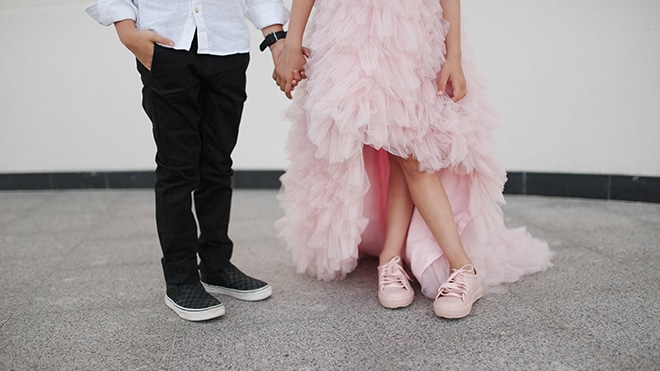Big weddings can be a lot of fun, but they’re not for everyone. Travel restrictions, scaled-back budgets and personal preferences may have an impact on your wedding planning, and more couples than ever are re-evaluating how they want their big day to look.
Businesses, venues and wedding vendors are beginning to open back up, but the odds are that small weddings are here to stay – not just out of necessity but also because many couples have fallen in love with the idea of creating an event that fits their style.
The Benefits of Small Weddings
A World of Possible Venues
A 200-person guest list limits your venue options, and a smaller pool of choices likely means longer waitlists. Limiting your guest list, on the other hand, frees up a lot of possibilities. From historic private estates or even your home or the home of a family member to a sailboat or a favorite museum or art gallery, the options for micro-weddings is virtually endless.
No Need to Break the Bank
According to one report, the cost of the typical U.S. wedding in 2019 was $33,900. While the average is skewed by some couples throwing over-the-top affairs, the median wedding budget was $23,000 and couples typically ended up spending closer to $30,000.
In 2020, unsurprisingly, there was a big shift. Most states limited the size of gatherings both indoors and outdoors, so couples had to get creative. While some couples held shift weddings with guests coming and going at scheduled times, many simply reduced their guest lists, which resulted in lower costs. In fact, one venue that typically charged $30,000 for 300 guests hosted micro-weddings for $2,750 for up to 30 guests or $4,500 for up to 50 guests.
Room to Splurge
If you’re inviting fewer people and scaling back your expectations for your big day, then chances are that you’ll have room to spend a little more on food and drinks that may be cost-prohibitive to provide on a large scale. A multi-course tasting menu and several hours of an open bar is a lot more financially feasible with 20 guests versus 200.
Planning Your Small Wedding
A scaled-back wedding doesn’t necessarily mean scaled-back decision-making; it may mean that you have a few more considerations.
Figure Out the Guestlist
Deciding to invite without hurting anyone’s feelings can be a challenge, but fortunately, most people understand the need for small guest lists, especially in areas that still limit gathering sizes. A good rule of thumb is that if there’s someone who you can’t decide whether to invite, it’s probably okay to leave them off the guest list.
Incorporate the Stuff You Care About
A smaller wedding gives you a lot of freedom to incorporate and spend money on the aspects that you actually care about and ditch the ones you don’t. Perhaps you don’t want to skimp on the décor or photography, but you’re not sure about spending hundreds of dollars on a DJ when you could simply hook your phone up to a good speaker.
Remembering Your Special Day
Even if a cozier celebration is a little different than the big wedding you always thought you wanted, that doesn’t mean you’ll miss out on meaningful memories. One great way to commemorate your day is with Soundwave Art. Record your vows, the background noise of the reception or the song from your first dance and create a keepsake that you’ll love for a lifetime.
Small weddings can be beautiful and intimate, making them a great option even long after restrictions are lifted.

